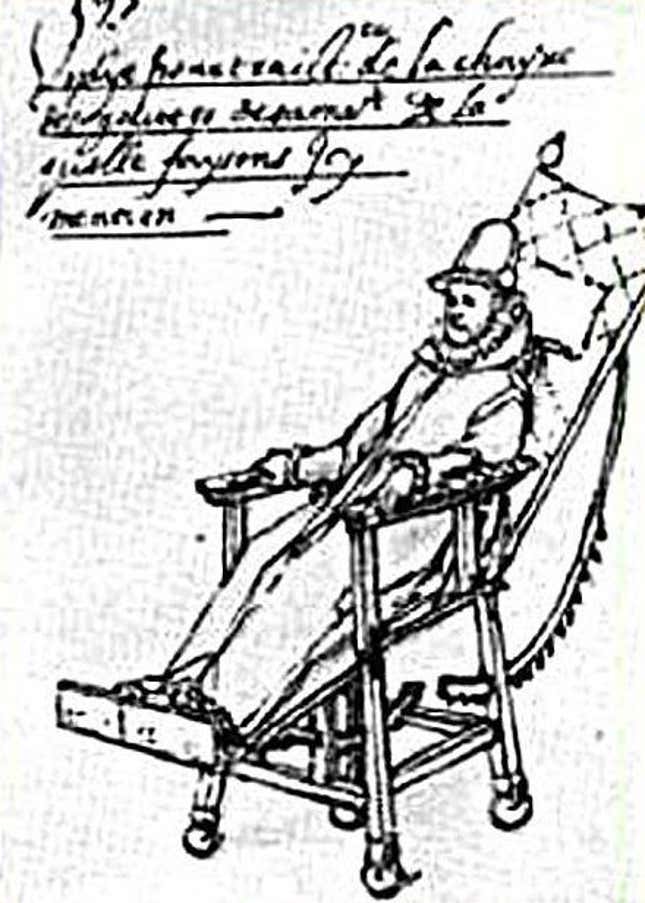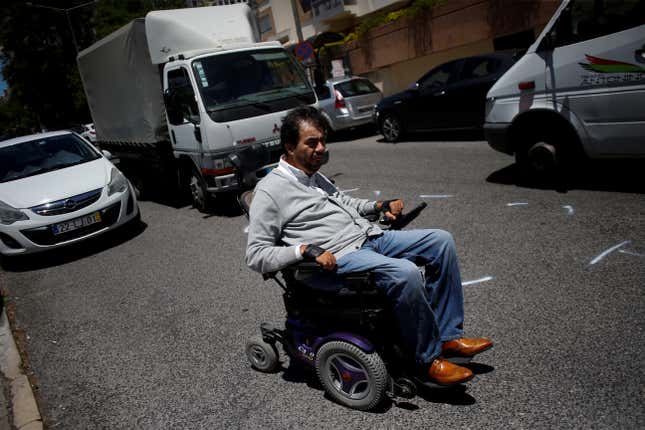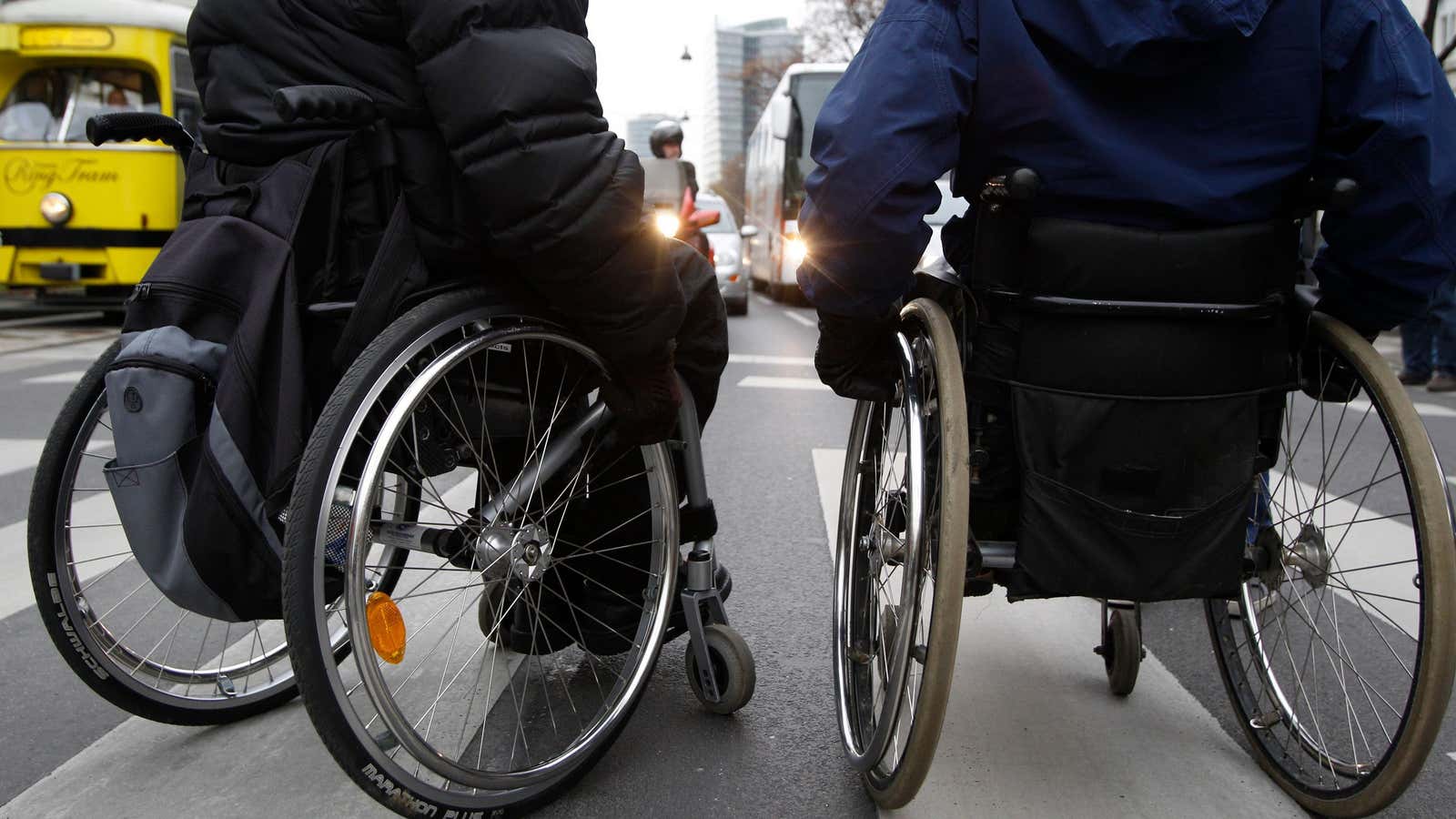In 1595, Spain’s aging King Phillip II rolled around in an early prototype of the wheelchair. The 68-year-old monarch suffered from gout, and someone in his court attached wheels to a reclining chair so servants could push him around the palace.

Over the last 420 years, the wheelchair has undergone enormous innovation but its basic premise has remained constant. It’s still a chair on wheels. Toyota says it’s time to rethink this paradigm, and the car company’s foundation is investing $4 million to kickstart the movement.
Launched in November 2017, Toyota Foundation’s Mobility Unlimited Challenge gives designers a chance to “to break away from the metaphor that assistive technology is about some sort of chair and some sort of wheels on it,” says August de los Reyes, a Google UX director who champions Toyota’s global design challenge.
In partnership with the UK-based innovation non-profit Nesta, Toyota’s four-year-old charity arm is pouring resources into rethinking the chair used by an estimated 65 million people around the world, after learning that more than a third of wheelchair-bound users are unable to work because of it. The recent ComRes/British Polling Council survey also suggests that 90% of wheelchair users say that they experience some form of physical pain while working.

After becoming a paralyzed from the waist down in 2013, de los Reyes has become a leading advocate for using design to improve conditions for people with disabilities. “We’re at a point now where there are so many design materials like sensors, actuators, machine learning, cloud computing,” he points out, citing the incredible advances in robotics and “biomechatronics” or the prevalence of “smart environments” where sensors help people with disabilities navigate their cities independently.
The Foundation is awarding incremental cash grants to promising alternatives. So far, ten teams have already received $50,000 to develop their initial ideas. Among them are several exoskeleton designs which enable people with paralysis to stand, an advance footdrop brace, and a mobility apparatus designed for young children. Other aspiring designers, engineers and disability design focused start-ups can apply until today (Aug. 15, 23:59 BST).
How mediocre design persists
De los Reyes says we’ve been stuck with clunky, uncomfortable wheelchairs for so long because of the so-called “change function principle”: “If the pain threshold of adopting a new technology is greater than the pain points of the status quo, then it doesn’t matter how good the solution is,” he explains. It’s why we often settle for passable, “good enough” design.

The Dvorak keyboard is a classic example of a good design that failed because of the burden of adoption. Patented by a educational psychologist August Dvorak in 1936, it’s posited as a vast improvement on the QWERTY keyboard, which was originally designed for manual typewriters 148 years ago. But no matter how much more efficient and ergonomic the Dvorak layout is, it failed to convince companies to change the default keyboards of tech devices because many people were already accustomed to QWERTY.
The failure of the Dvorak is exactly what Toyota wants to avoid, says De los Reyes.
Different from other design contests that end with the sexy ideation phase, the Toyota Mobility Foundation wants to fund wheelchair alternatives that could actually work for the largest number of people. They’re giving design teams two years to develop their ideas and requiring them to co-design with people who actually have lower-limb paralysis. The best prototype will be awarded $1 million in seed money and announced during the Tokyo 2020 Olympics games.
“My hope is that the Challenge will change the situation, and the resulting technology will open new opportunities for people like myself with limited mobility,” says de los Reyes.
Toyota’s push to change the public perception of how disabled people around move will interest critics of the sedentary seated figure icon on the universal symbol for disability access. In 2016, the Accessible Icon Project proposed an “active and engaged” symbol featuring a figure leaning on the wheelchair.
If Toyota’s project truly succeeds, we could eventually see a new disability icon—without the wheelchair.
